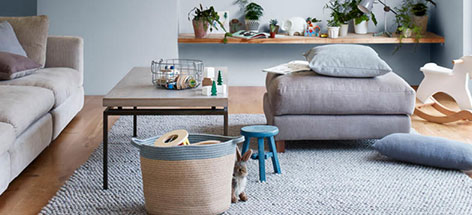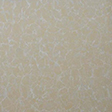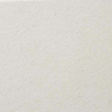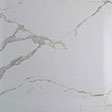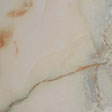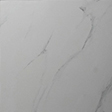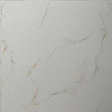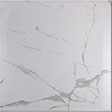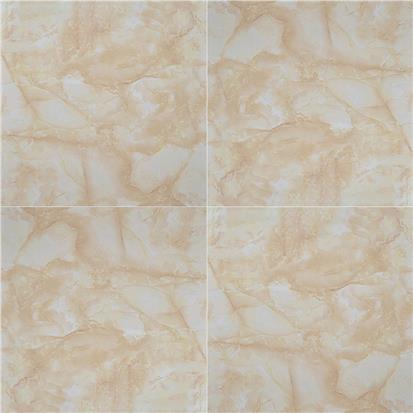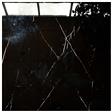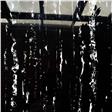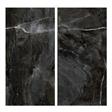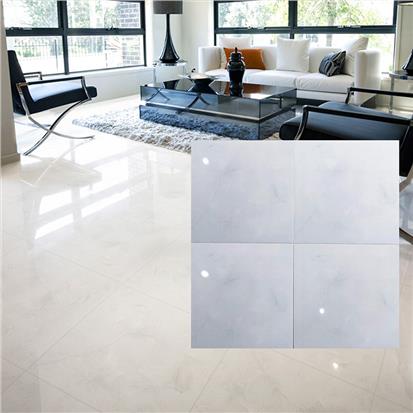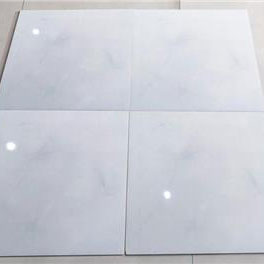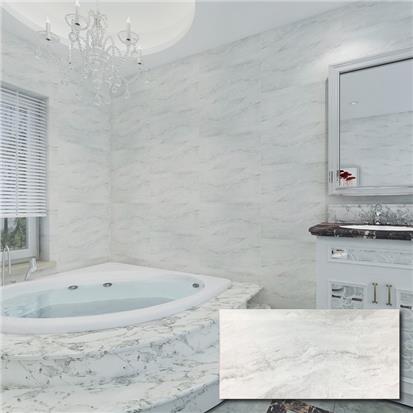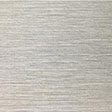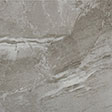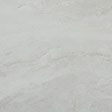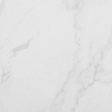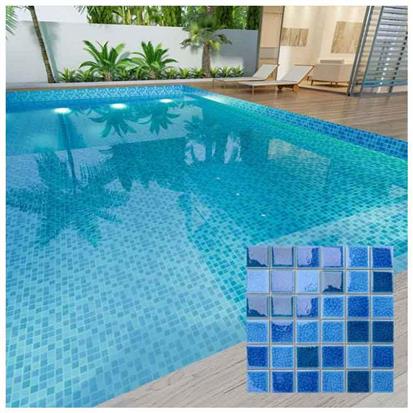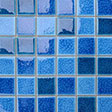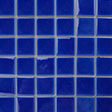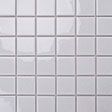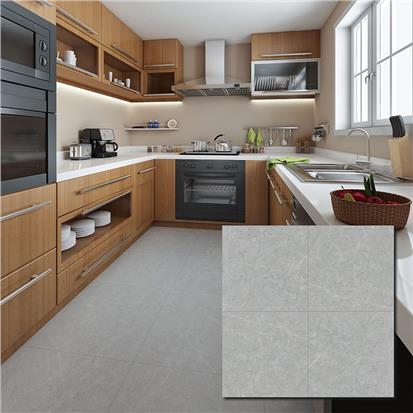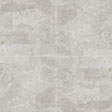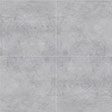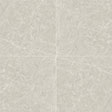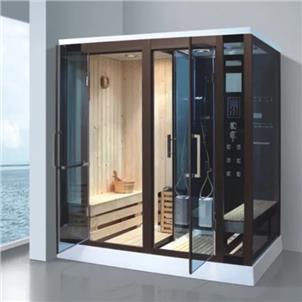The utility model relates to a new type of ceramic roof tile, which belongs to a roof building material. It has a rectangular tile body, the front of the tile body has a longitudinal groove, the tile body at the upper end of the groove has a tile hanging head, the left and right sides of the tile body are respectively left overlap edge and right overlap edge, the lower end of the back of the tile body is provided with a rear claw boss, and the convex part at the back of the tile body is provided with a protruding rear rib. If you are using ceramic roof tiles for any design applications, here is the guide shares everything you need to know, roof tiles' advantages, structures, differences and tips on buying them.
What Are The Advantages Of Ceramic Roof Tiles?
This kind of ceramic tile roof has a reasonable structure, smooth drainage and no water leakage. During installation, each piece of ceramic tile can be overlapped with the other. It is convenient, tightly overlapped and firmly connected. The tile body can be made of ceramic materials. It has high bending and compressive strength, uniform density, is lightweight, and has no water absorption. It will not increase the roof load due to water absorption as the cylinder tile and cement tile, The surface of the tile body is smooth and flat with various colors, which is an ideal roof material for modern buildings.
What Are The Structures Roof Tiles?
The utility model relates to a roof tile structure and a construction method of the roof tile structure, which comprises a sheet tile, a semi-cylindrical tile and a roof tile support structure; Firstly, the supporting structure of tiles is constructed on the roof, and the flake tiles and semi-cylindrical tiles are made by metal casting; Then, the lug part of the upper edge of the sheet tile is buckled on the support, fixed with nails, and the tile-laying is completed by covering the lower tile with the part of the upper tile in sequence; Then, the bottom grooves of the semi-cylindrical tiles are closely connected to the adjacent two rows of tiles, which are also fixed with nails, and then the overall structure is completed in sequence; The whole structure is complete and close, which can greatly improve the durability and construction quality of the roof tile structure.

The utility model relates to an improved roof tile structure, which is characterized in that: the tile body of the sheet structure is made of metal casting, a flange is arranged above the leading edge of the tile, two lugs are arranged below the leading edge, an upward flange is arranged at the rear edge, and two connecting holes are drilled at the front end of the tile.
What's The Difference Between Ceramic Roof Tiles And Clay Roof Tiles?
Different in nature
- Properties of clay tile: it is made of clay and other synthetic materials, dried and fired at high temperatures.
- Ceramic tile property: a kind of roof building material, it has a rectangular tile body, the front of the tile body has a longitudinal groove, the tile body at the upper end of the groove has a tile hanger, the left and right sides of the tile body are left and right overlapping edges, the lower end of the tile body is provided with a rear claw boss, and the convex part has a prominent rear rib on the back of the tile body.
Different production methods
- Ceramic tile production method: in the high temperature of more than 1000 degrees, clay solidified into pottery, more than 1200 degrees after the basic porcelain, general ceramic tile temperature control below 1200 degrees.
- Ceramic tile production method: using a new manufacturing process, the carbon fiber reinforced silicon carbide ceramic tile can repeatedly withstand the high temperature of 1700 ℃, and has strong impact resistance and chemical resistance.

The difference in technology
- The ceramic roof tiles are mixed with raw materials in a certain proportion, then grind into slurry by ball mill and water, and then spray dried into fine powder particles after drying tower. After pressing, the tile is pressed and molded by high pressure press. After drying and glazing for a short time, the kiln is fired at high temperature.
- The ceramic tile does not need to be ball milled and dried, but is directly formed by vacuum extrusion after being mixed and aged. The surface can also be glazed or the natural color of the ceramic tile can be used. The tile blank needs to be heated and dried in the lower temperature range for a long time, and then sintered at high temperature in the tunnel kiln for a long time.
The difference of sintering degree
- Ceramic tile has high sintering degree, low water absorption, better internal quality and higher price.
The difference in raw materials.
- Clay tile is made of clay and other synthetic materials. After drying, it is fired at high temperature.
- Ceramic tiles can be made of ceramic materials, with high flexural and compressive strength, uniform density, lightweight, no water absorption, and no roof load increase due to water absorption like cylinder tiles and cement tiles. The tile surface is smooth and smooth, and can have various colors. It is an ideal roof material for modern buildings.
How To Distinguishing The Quality Of Ceramic Roof Tile
1.Grade signs
Ceramic tiles are divided into five grades, which are superior, first-class, second-class, third-class and substandard. In addition, in the purchase, we should also pay attention to whether the identification, specification and color number on the ceramic tile and the packing box are consistent, and whether the product certificate, trademark and quality inspection standard are clear.
2. Sizes
Standard size is not only conducive to construction but also reflects the decorative effect. Good specification deviation is small, the paving is neat and uniform, the brick seam is straight, and the decoration effect is good. If the size error is greater than 0.5mm and the flatness is greater than 0.1mm, it will increase the difficulty of construction, and the effect after decoration is also poor.
Whether the size meets the standard can be judged by the target. Place the brick on the flat surface to see whether its four sides are completely consistent with the flat surface. At the same time, see whether the four corners of the ceramic tile are right angles. Ceramic roof tile has no defects such as concave-convex, bulge and angle warping. The error of side length is not more than 0.2-0.3 mm, and the error of thickness is not more than 0.1 mm.

3. Hardness
Ceramic tile with good hardness, toughness, not fragile rotten for the top grade. The edges and corners of the tiles scratch each other to see whether the broken fragments are fine or loose, hard, brittle or soft, whether they leave scratches or scattered powder. If the former is superior, the latter is inferior.
Whether the size is standard or not is the key to judge the quality of the tiles. Use tape or caliper to measure whether the diagonal and four sides of the tiles are uniform in size and thickness. Good tiles have crisp sound, indicating that the content of porcelain is high. If the sound "Ta Ta" with stubble sound, indicating that there are cracks in the brick. Good tile, master installation is also convenient for construction, the effect of the installation is also standard.
4. Chromatic aberration
The color difference of ceramic tile is directly related to the decoration effect. Not one batch of products, or the same batch, may produce color differences. Therefore, in the process of purchase, we should sample and compare the products in each package, put the tiles in the same variety and the same model, and observe the degree of color difference. Good products have small color differences, basically, the same color tone, bright and uniform color and luster, while poor products have large color differences, The color of the product is different.

 EN
EN FR
FR PT
PT AR
AR
